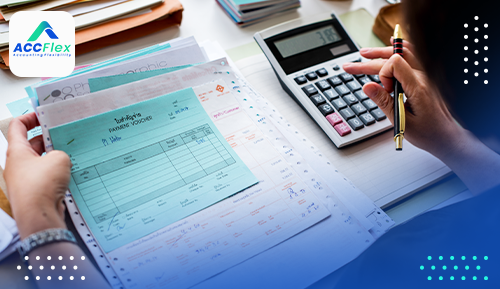Cash is that is cash on hand or cash in the bank or financial investments that are readily convertible into cash very quickly and without losses, the cash budget is one of the most important budgets indispensable to any finance department and that is prepared for short-term periods and long-term periods and must be prepared with accuracy and high efficiency.
The purpose of the cash budget
It is that the company's payments and receipts are estimated and have effective control over the cash
And each company must have a certain level of cash that it maintains to pay the value of purchases and salaries and all operating expenses and the cash amount or this level of cash varies from one company to another according to the size of the company and the type of its activity and the nature of its products and its sales volume and cash flows for it both inflows and outflows in the sense of nature account receivable and debt collection dates from customers, as well as the credit granted to them by suppliers, and determining the amount and level of cash, this by way of budget and appropriation between cash inflow and outflow to it
The companies maintain the necessary cash to face any emergency circumstance that occurs to the company and this happens when you want, for example, to replace capital assets as a result of any unexpected event that occurs to it or through an unexpected liability that appears without arrangement and cash to be maintained as a reserve, for example, often in the form of time deposits and marketable securities
Also, the company maintains a certain level of cash that enables it to take advantage of any investment opportunity available to the company and this also is in the form of time deposits and determines the amount of cash maintained as a reserve the extent of opportunities available for investment in front of the company according to its activity and the nature of the market
The company's success in managing its cash is demonstrated in its ability to operating cash and cash turnover fully all the time except for the minimum cash balance
It is the minimum cash balance that must be maintained in the company’s treasury or the bank’s current account to face emergency cash payments, also, in case the cash exceeds the required minimum, the company is losing its profit opportunities
The most effective method of cash management is the cash budget, and this is done by estimating the cash inflows and cash outflows annually, biannually, quarterly, or monthly
The main components of the cash budget are cash receipts and cash payments
The Steps for Preparing a Cash Budget
First, estimating cash receipts, the most important of which are:
1- Receipts from cash (sales) revenue
2- Revenue (sales) from previous months or a portion of the current month credit sales
- Bank deposit interest income
- Rent income and third-party service operation
- Dividends income or yield and interest of bonds
Second, estimating cash payments, the most important of which are:
- Payments of cash purchases
- Payments of credit purchases from previous months to the current period
- Payments of purchasing machinery and equipment or finance lease installments
- Payments of wages, salaries, and commissions
- Payments to government agencies, taxes of all types, social insurance, etc.
- Fixed administrative expenses during the month other than administrative salaries
- Marketing expenses and manufacturing overhead other than salaries and depreciation
Third, subtracting payments from receipts to reach the operating cash surplus or deficit
Then adding the cash posted from the previous month (opening balance) to reach (closing cash balance).
Fourth, subtracting the minimum cash balance
This minimum is to cover the risk of shortages of receipts or increased payments outside the normal circumstances and of course, the minimum cash balance is due to its estimation to the finance department and its experience in unexpected payments and also its estimate of the minimum that must be maintained and this, of course, varies from one company to another according to its size and according to the nature of its activity and its sources of finance.
Operating surplus or deficit
It is the difference between cash flow; cash inflow and cash outflow
Of course, if the difference is positive, then there is a cash surplus and vice versa, if the difference is negative, then there is an operating deficit
Opening cash balance of the month or current period is a closing cash balance of the previous period
The minimum monthly cash balance, which is often, part of the permanent working capital that is funded from long-term sources of finance
This minimum cash is treated as a deficit treatment by considering it a value that does not exist and is required to manage to be used for permanent investment field
Meaning that it is deducted from the closing cash balance
So, the opening cash balance to which the operating surplus is added to set the closing cash balance of the month, or the operating deficit is deducted from it to set the closing cash balance of the month, and it appears in both cases with either a positive value or a negative value to reach the expected net cash balance during the period
Here there are three possibilities
The first possibility
That the expected net cash balance appears at a very high positive value in all the months of the planning and this means that the company has a large accumulation of cash balances and is in unnecessary need for it and this affects the profitability of the company as a result of the loss of investment opportunities for funds and therefore the company must be preparing investments
The second possibility
That the expected net cash balance appears with a negative value in all months of the planning, and the problem is that the cash inflows cannot face cash outflows and cannot the minimum cash balance availability and this leads the company to a technical insolvency case and this will have problems affecting the profitability and the value of the company in the market, this necessitates the company facing this situation through a set of procedures:
- Increasing cash sale and decreasing credit sale
- Changing the company's credit policies and collecting in the sense of reducing the credit period granted to customers
- Disposing of some assets and investments that are useless in maintaining them
- Trying to slow payment to suppliers without adversely affecting the company's reputation
The third possibility
The possibility of the expected net cash balance appearing at different values during the planning months means some of them to appear with negative values and some of them to appear with positive values and company can face this by moving portion of the cash inflows from months that have a surplus to months that have a deficit and this through adjusting financial policies that be affected in the trend or it borrows to cover the deficit and the payment to be from the surplus months
The Importance of Cash Budget
1- Corporate cash planning
The cash flow problem is one of the problems facing companies, meaning that in some periods when cash exceeds the company’s need and times when the company needs liquidity and is not able to provide it, for this the cash budget as a tool for financial planning that contributes to clarifying the cash position of business projects during a specific period to direct the department to make appropriate decisions to amendment the organization's programs in a way that is appropriate for it.
2- Reviewing the business plan based on the cash budget
If the company finds out from an examination of the cash budget that it is expected that there will be a deficit in cash revenue from cash expenses, the production plan, sale and expansions will be revised to adjust it to avoid this deficit. The company may postpone expansion projects, for example, to avoid this deficit, or adjust it in the procurement software until it reduces the payments required for payment, or adjusts in the sales software to ensure a higher rate of collection.
3- Knowing the payment dates to suppliers: contributes and determines the company's ability to purchase in large quantities over specified periods.
4- The cash budget as a control tool: in the sense of monitoring of project implementation and monitoring performance, this contributes to working on correcting it on a real-time basis and detecting causes of variances in the production plan or sales plan. Also, the actual results are compared to what was expected through the cash planning.










